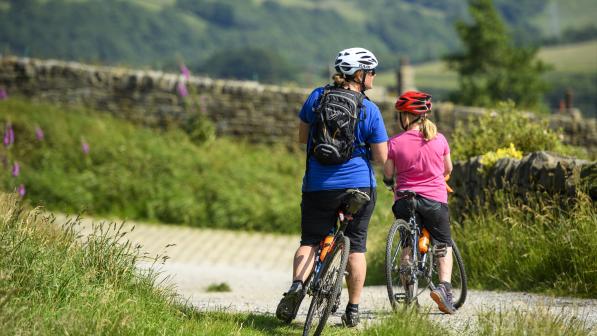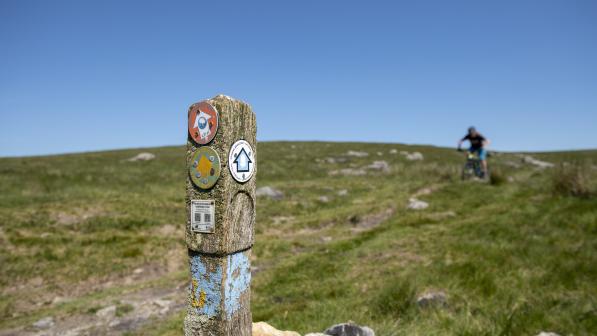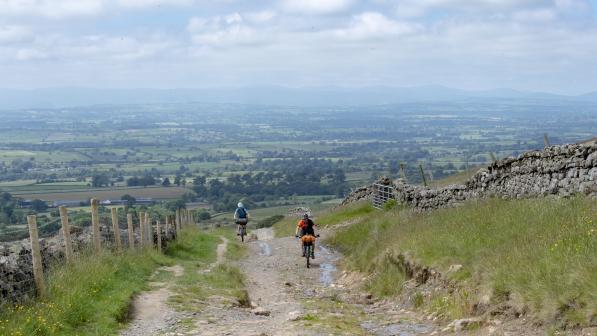National Parks review: What's happened since?

It's a year since the publication of a wide-ranging review of England’s National Parks and Areas of Outstanding National Beauty (AONBs). Its author Julian Glover set out a bold vision for change, highlighting the strong emotional connection that many people feel to these special landscapes, but also the need for them to welcome a wider range of people.
Crucially for cycling, he pointed out the disparity of off-road cycling provision in different areas, with some counties having lots of bridleways and byways and others very few, and suggested that access for activities other than walking could be expanded.
Glover’s vision was inspiring, but it is yet to inspire change. We are still waiting for the UK Government to publish its official response, so we can find out which recommendations will be implemented and how. Like many things, it’s likely that this has been delayed by the events of recent months.
September 2019 was a different world. A world that had never heard of Covid-19 and wouldn’t recognise the word ‘lockdown’.
As the world has shifted during the pandemic, it has thrown Glover’s recommendations into even sharper relief and illustrated why they are so necessary.
A thirst for the outdoors
In April and May, with schools, gyms and indoor activities closed, people went outside – in their thousands. For some, it was the first time exploring the paths and trails around their home.
We rediscovered how good being outdoors makes us feel, with 67% of people in England saying it benefited their mental health, and 74% saying they took more time to notice nature.
However, the need for outdoor space also highlighted inequalities in access to nature. Several studies have found that people on lower incomes and BAME communities are less likely to have accessible green spaces near their home.
This inequality is not just prevalent at a local level, but also in terms of access to National Parks. The Glover Review found that visitors to National Parks are overwhelmingly white and middle class, and research by CPRE revealed that almost half of the country’s most socially deprived areas are outside of the ‘accessible range’ – more than 15 miles away from a National Park or AONB.
In addition, if we consider that outside of the ‘accessible range’ lie the majority of areas where less than half of all households own a car, it’s clear that people who are most reliant on public transport to reach our National Parks and AONBs are those who are likely to have to travel further to get there.
Traffic silenced
One of the few unexpected upsides to the difficult months of lockdown was much quieter roads in most places, leading to record numbers of people cycling. Cycling was reported as the most popular activity for families. We know that 60% of people who don’t cycle are put off by busy roads, and this sudden drop in traffic levels proved that if you take away that fear, people will cycle.
This doesn’t just apply to urban areas. Residents in rural honeypot locations were able to breathe again rather than being swamped by congestion. It demonstrates why innovative measures to reduce private car use by visitors to National Parks are so important, such as park and ride shuttle buses, e-bike hire schemes, or closing select rural lanes to through traffic to make them safer for non-motorised users by directing vehicles onto larger main roads.
Glover picked up on this and suggested that the Lake District could be a pilot area to test new initiatives, before they are rolled out more widely. Covid-19 has given these issues a new urgency, as the Lake District has experienced a surge in staycation visitors this summer with people unable or unwilling to go abroad.
More places to cycle
Many people venturing out on their bikes during lockdown found themselves feeling unsure of where they were allowed to go. Clear education about off-road cycling options can help to solve this, but with the archaic and often illogical nature of rights of way classification in England, it’s no wonder things can be confusing.
It’s an issue that Glover highlighted in his report, saying, “...there seems little logic across the country to the nature of rights of way at the moment. Cumbria and Shropshire are rich in bridlepaths. In some other places, almost all routes are only open to walkers not horse riders or cyclists. As even rural roads become busier and more dangerous, it is all the more important that fair access is given to all.”
There seems little logic across the country to the nature of rights of way at the moment... it is all the more important that fair access is given to all.
Glover Review
Expanding the provision of routes for cyclists and horse riders would not only provide safe traffic-free options – it would also help people to spread out rather than being concentrated on just 20% of rights of way currently open to them, as Cycling UK identified in its Beyond the Green Belt report.
Next steps
We’ll be pressing the UK Government to act on the recommendations identified in the Glover Review, to enable more people to experience England’s fantastic National Landscapes.
If you want to help improve off-road access closer to home, Cycling UK is working on a new campaign to identify the missing links for cycling across the country – if you want to play your part, subscribe to our off-road updates to be the first to find out more.







